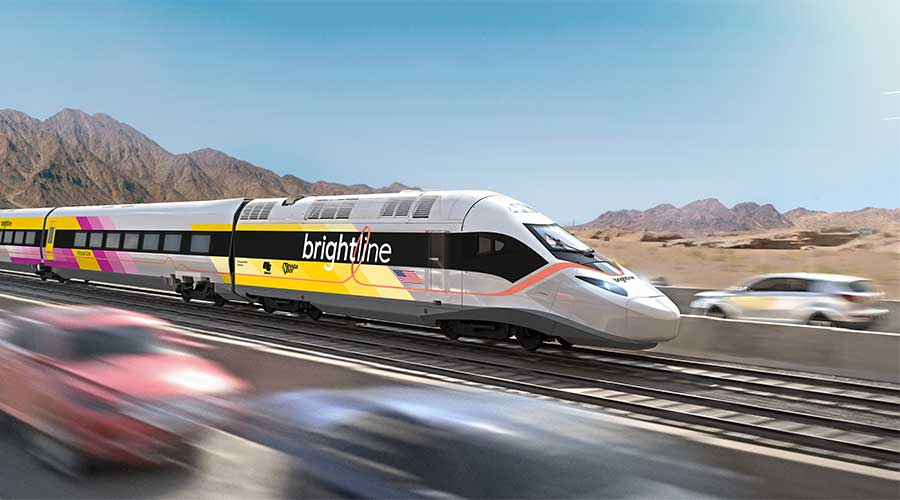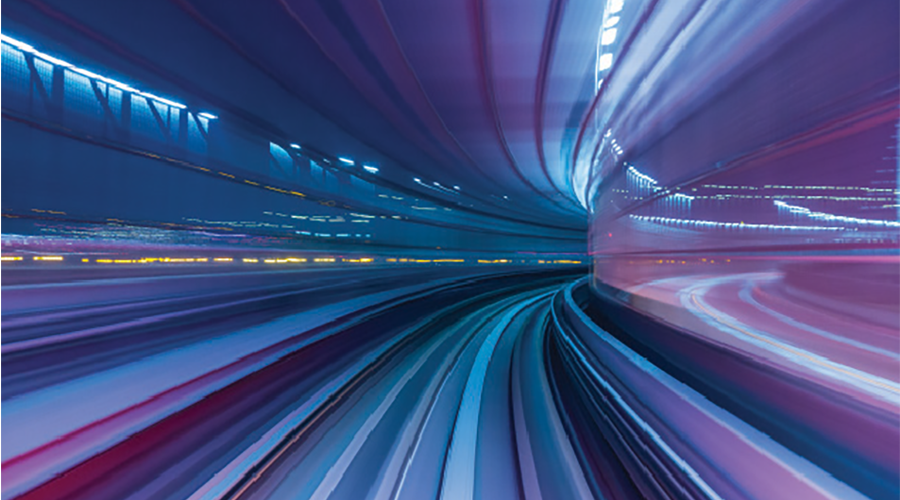Stay updated on news, articles and information for the rail industry
October 2014
Part 1 : Progressive Railroading's Passenger Rail at a Glance 2014: Preface
Part 2 : Progressive Railroading's Passenger Rail at a Glance 2014: Amtrak and transit agencies in California
Part 3 : Progressive Railroading's Passenger Rail at a Glance 2014: Transit agencies in Colorado and Florida
Part 4 : Progressive Railroading's Passenger Rail at a Glance 2014: Transit agencies in Georgia, Illinois and Missouri
Part 5 : Progressive Railroading's Passenger Rail at a Glance 2014: Transit agencies in New York
Part 6 : Progressive Railroading's Passenger Rail at a Glance 2014: Transit agencies in Tennessee and Texas
Part 8 : Progressive Railroading's Passenger Rail At A Glance: Metrolinx in Ontario, Canada
Rail News: Passenger RailProgressive Railroading's Passenger Rail at a Glance 2014: Transit agencies in Georgia, Illinois and Missouri
GEORGIA
Metropolitan Atlanta Rapid Transit Authority (MARTA)
Operates rail service and bus service in the Atlanta region. Heavy-rail service launched in 1979.
Route miles: 48 heavy rail
Rolling stock: 316 rail cars in the active fleet
Annual ridership: 69.6 million
Annual operating cost: $145.3 million, including $8.7 million for rail operations (which includes engineering and development); $27.3 million for rail transportation; $34.7 million for rail-car maintenance; $35.5 million for maintenance of way; $8.2 million for program and contract management; and $6.5 million for vertical transportation
Number of stations: 38
MARTA's FY15 budget includes the following capital projects: Brady Mobility Facility, $29.5 million; train control systems upgrade, $27.4 million; fire protection systems upgrade, $21.8 million; future radio infrastructure, $12.8 million; replace running rail and yard ties, $8.8 million; reliability-centered maintenance program, $8 million; facilities upgrade program, $7.3 million; and CCTV system expansion, $6.5 million
ILLINOIS
Chicago Transit Authority (CTA)
Operates rail service on eight routes, as well as bus service, in Chicago and 35 suburbs. Rail service launched in 1947.
Route miles: 224.1 heavy rail
Rolling stock: 1,434 rail cars, average age 22 years; currently receiving an order of 714 new rail cars, with 188 left to be delivered
Annual ridership: 229.3 million
Annual operating cost: $265 million (2014)
Annual capital cost: $55.8 million rail; $234.7 million systemwide projects; $113.7 million support facilities/equipment
Number of stations: 145
The following capital improvement projects are currently under way or slated to begin in 2014-2015:
- Your New Blue, a $492 million program that includes updating 13 Blue Line stations, and upgrading elevated and subway infrastructure, signals and traction power. Work will be performed in phases over the next three years, with the project scheduled to be completed in 2017. A $20.4 million contract for station renovation work at Damen, Western and California has been awarded to Kiewit Infrastructure.
- Rehabilitation of the elevated Ravenswood Connector, a 2.8-mile stretch of track between the Armitage and Merchandise Mart stations on the Brown Line. The project includes repairing and replacing components on the steel structure and then, beginning in 2015, replacing deteriorated ties and track components. The project will cost $71.2 million.
- A new station at Cermak-McCormick Place on the Green Line, located in the two-mile stretch between the existing Roosevelt and 35th-Bronzeville-IIT Green Line stations. The Chicago Department of Transportation will own the station and is responsible for overseeing the facility's construction, with input and guidance from the CTA. The $50 million project began in August 2013 and is scheduled to be completed in early 2015.
- Construction of an 8,800-square-foot mezzanine at LaSalle/Division, which will include two elevators to meet ADA standards. The existing platform, station interiors and mezzanine at Clark/Division also will be renovated. The $41.1 million project began in 2012 and is scheduled to be completed in 2015.
- An upgrade of the existing electrical equipment and buildings at the Princeton substation on West 63rd Street, the State Street substation in the Loop and the Kimball substation at the Brown Line terminal. The project also will increase the electrical power capacity at both State and Kimball by 20 percent. Work is being completed by Clark Construction Group under a $25.6 million contract. The project began in spring 2014 and is scheduled to be completed by 2015's end.
- Reconstruction of the Wilson Red Line Station, which calls for constructing main and auxiliary entrances on Wilson, as well as a third entrance at Sunnyside, and dual platforms to allow for transfers between the Red and Purple lines. The $203 million project also includes the reconstruction of 2,200 feet of track and structure, including work to replace bridging and viaducts, and relocate all elevated support columns from the street and most of the sidewalks along Broadway and Wilson. In addition, the original stationhouse façade will be rehabilitated, a former clock tower will be restored, and the roof and parapet structure will be repaired and/or replaced as needed. Walsh/II in One Joint Venture was awarded a $153.6 million contract to complete the work, which is scheduled to begin this month and be finished in September 2017.
- A 95th Street Terminal improvement project, which includes major renovations and an expansion to the stationhouse, aimed at providing more space and improving the walking flow of passengers, upgrading platforms, and adding new or expanding bus terminal facilities. The $240 million project is scheduled to begin this fall and be completed in 2016. Walsh/II in One Joint Venture was awarded a $23.1 million contract for the initial foundation and retaining wall work.
- Renovation of the Illinois Medical District Station on CTA's Forest Park Blue Line, where ridership has increased by 53 percent over the past five years. The $23 million project — scheduled to begin in 2015 and be completed in 2016 — calls for rebuilding the main stationhouse, featuring new stairs and the addition of an elevator. The two station-to-platform ramps for each auxiliary entrance also will be reconstructed to comply with ADA guidelines. Other work includes improving station and platform lighting; installing additional security cameras, and bus and train tracker displays; repairing the platform canopy; and refurbishing auxiliary entrances at Damen and Paulina.
- A new Washington/Wabash Loop Elevated Station that will result in the consolidation of the existing Randolph/Wabash and Madison/Wabash Loop stations. The new facility will feature wider platforms and two auxiliary exits near the locations of the stations being consolidated. The $23 million project is scheduled to begin in 2015 and be completed in 2016.
- An upgrade of the Quincy Loop Elevated Station, including the addition of two elevators to make the station accessible. Design work is scheduled to begin later this year, with construction beginning as early 2015. The project is estimated to cost $15 million and be completed in 2017.
Northeast Illinois Regional Commuter Railroad Corp. (Metra)
Provides commuter-rail service throughout a six-county region with 11 rail lines operating over more than 1,100 miles of track. Chicago has had commuter-rail service since the 1850s, but Metra was formed in 1984.
Route miles: 487.7 commuter rail
Rolling stock: 146 locomotives, average age 26.1 years; 266 electric multiple units, average age 21.6 years; 837 non-electric cars, average age 25.3 years; plus 160 electric multiple units on order from Nippon Sharyo, half of which have been delivered. The remainder are scheduled to be delivered in 2015.
Annual ridership: 73.6 million
Annual operating cost: $728.6 million
Annual capital cost: $207.3 million
Number of stations: 241
Metra is nearing the end of the first half of the first phase of a project to rebuild bridges over 22 streets along the UP North Line on Chicago's north side. In this phase, bridges are being built over the 11 northernmost streets — first bridges for the outbound tracks and, next, the inbound tracks. The first phase also includes the reconstruction of the Ravenswood Station, the busiest stop along the line. As of press time, Metra was almost finished with the outbound side of the station. The next phase will use a similar two-part plan for the 11 remaining streets. The total project cost is more than $200 million.
The agency also is building a $142 million bridge known as the Englewood Flyover, near 63rd and State streets in Chicago on the Rock Island Line. The project will separate the Rock Island Line from a set of Norfolk Southern Railway tracks that also are used by Amtrak. Metra officials expect the bridge to be operational this fall. Then, the agency will begin building a third bay to the bridge so it can add a third track to the Rock Island Line in the future. The bay is scheduled to be complete at 2015's end.
In the meantime, Metra is renovating the Flossmoor Station on the Metra Electric Line, building a pedestrian tunnel at Lombard on the UP West Line and replacing platforms at the Downers Grove Station on the BNSF Line.
As of press time, Metra was halfway through its renovation of 176 rail cars that were manufactured by Amerail and delivered to Metra in the 1990s. Work is being done in-house, and will cost $115 million.
MISSOURI
Bi-State Development Agency/Metro
Operates MetroLink light-rail, bus and paratransit service in the St. Louis region, both in Missouri and Illinois. Light-rail service launched in 1993.
Route miles: 46 light rail
Rolling stock: 87 light-rail vehicles, average age 16 years
Annual ridership: 17 million
Annual operating cost: $74 million
Annual capital cost: $16 million
Number of stations: 37
Metro's capital projects include: improving traction power substation drainage and waterproofing, and replacing power feeder cables on substations along Phase 1 of the MetroLink alignment ($2.8 million); replacing wood ties on Phases 1 and 2 of the MetroLink alignment from East St. Louis, Ill., to Lambert International Airport in St. Louis ($2 million); and replacing the fixed-tension overhead catenary system with an overhead conductor rail system across the Eads Bridge and to the downtown tunnel portal in East St. Louis and St. Louis ($1.6 million). The agency will spend another $10 million on right-of-way improvements such as structural repairs, slope stability, and drainage and culvert improvements along Phase 1 and 2 of the MetroLink alignment. In 2015 and 2016, the agency expects to complete structural repairs on and repaint the Eads Bridge, at a cost of $20 million.
Part 1: Passenger Rail at a Glance 2014: Preface
Part 2: Passenger Rail at a Glance 2014: Amtrak and transit agencies in California
Part 3: Passenger Rail at a Glance 2014: Transit agencies in Colorado and Florida
Part 4: Passenger Rail at a Glance 2014: Transit agencies in Georgia, Illinois and Missouri
Part 5: Passenger Rail at a Glance 2014: Transit agencies in New York
Part 6: Passenger Rail at a Glance 2014: Transit agencies in Tennessee and Texas
Part 7: Passenger Rail at a Glance 2014: Transit agencies in Virginia and the state of Washington
Part 8: Passenger Rail at a Glance 2014: Metrolinx in Ontario, Canada


 2025 MOW Spending Report: Passenger-rail programs
2025 MOW Spending Report: Passenger-rail programs
 Gardner steps down as Amtrak CEO
Gardner steps down as Amtrak CEO
 Guest comment: Oliver Wyman’s David Hunt
Guest comment: Oliver Wyman’s David Hunt
 Women of Influence in Rail eBook
Women of Influence in Rail eBook
 railPrime
railPrime







